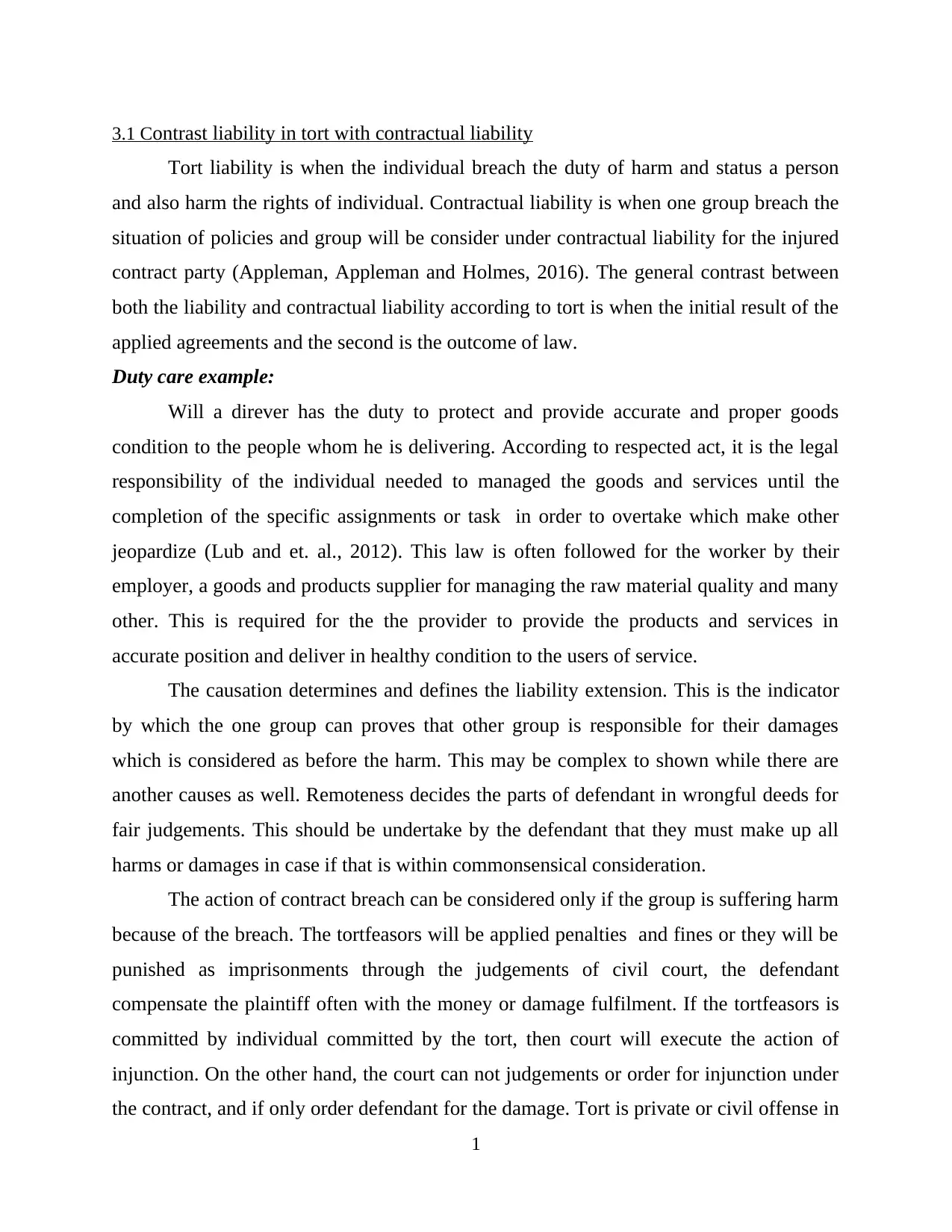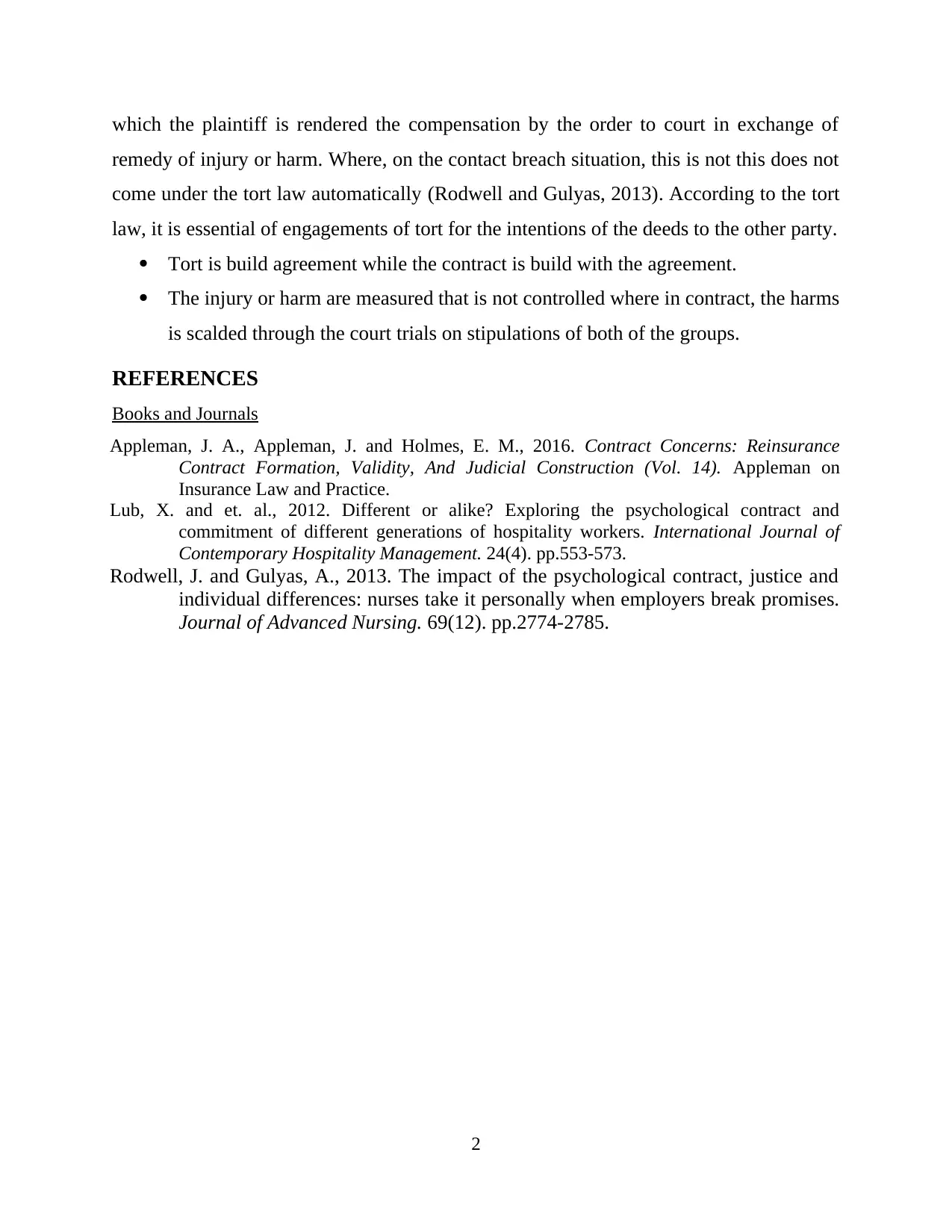Liability Comparison: Tort and Contractual Law in Legal Context
VerifiedAdded on 2020/07/22
|4
|674
|52
Report
AI Summary
This report provides a comparative analysis of tort and contractual liability, highlighting their key differences and similarities. It begins by defining both tort and contractual liability, emphasizing the nature of each, and explaining how they arise from different legal foundations. The report explores the concept of duty of care, which is central to tort law, and contrasts it with the contractual obligations established through agreements. It discusses the implications of breach of contract and the legal remedies available, such as compensation and injunctions. The analysis includes a discussion on how causation, remoteness, and intentions affect the liability. Furthermore, the report references academic sources such as books and journals to support its claims and provide a comprehensive overview of the topic.
1 out of 4





![Detailed Case Note: ABC v Lenah Game Meats Pty Ltd [2001] HCA 63 - Law](/_next/image/?url=https%3A%2F%2Fdesklib.com%2Fmedia%2Fimages%2Fun%2F2defe8bc0fc343dd9dabacb72abf0ae7.jpg&w=256&q=75)




![[object Object]](/_next/static/media/star-bottom.7253800d.svg)